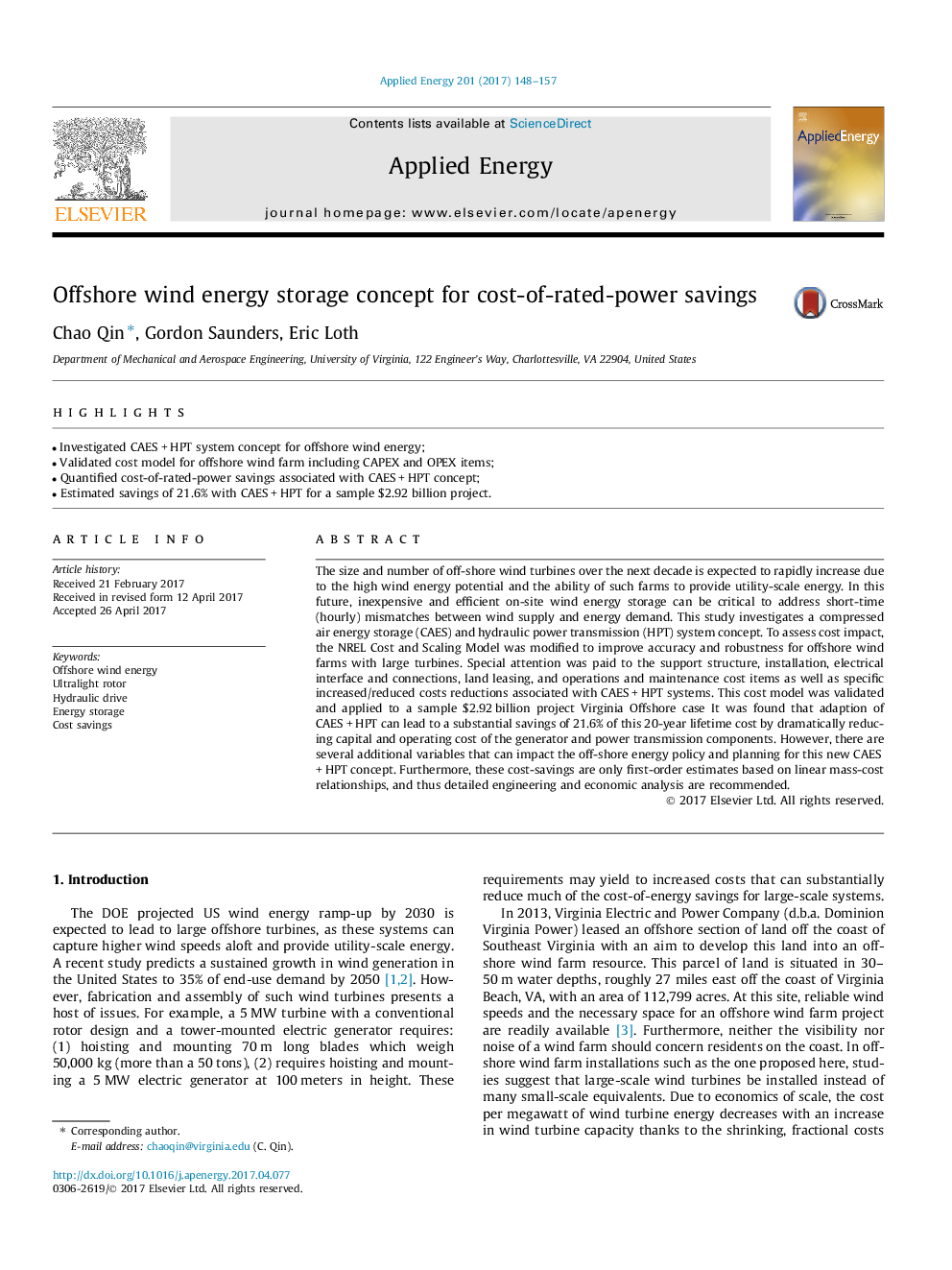ترجمه فارسی عنوان مقاله
مفهوم ذخیره سازی انرژی دریایی برای صرفه جویی در مصرف انرژی با هزینه
عنوان انگلیسی
Offshore wind energy storage concept for cost-of-rated-power savings
| کد مقاله | سال انتشار | تعداد صفحات مقاله انگلیسی |
|---|---|---|
| 145418 | 2017 | 10 صفحه PDF |
منبع

Publisher : Elsevier - Science Direct (الزویر - ساینس دایرکت)
Journal : Applied Energy, Volume 201, 1 September 2017, Pages 148-157
ترجمه کلمات کلیدی
انرژی باد ساحلی، روتور فوق فوقالعاده هیدرولیک درایو، ذخیره انرژی، صرفه جویی در هزینه،
کلمات کلیدی انگلیسی
Offshore wind energy; Ultralight rotor; Hydraulic drive; Energy storage; Cost savings;

